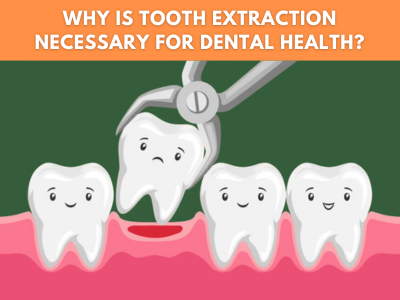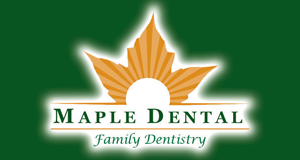Why is Tooth Extraction necessary for dental health?

When it comes to dental care, sometimes the most effective way to protect your overall oral health is by opting for a Tooth Extraction. At Maple Dental, we understand that the idea of losing a tooth can be unsettling. However, in some cases, removing a damaged or infected tooth is the best decision for your long-term well-being. If you’re experiencing dental issues and are unsure whether tooth extraction is necessary, we’re here to guide you through the process.
What is Tooth Extraction?
Tooth Extraction is the process of removing a tooth from its socket in the bone. This procedure may be necessary for various reasons, ranging from severe damage and decay to overcrowding. Whether it’s a wisdom tooth, a severely decayed tooth, or one that’s causing other issues, our team of experienced professionals will help determine the best course of action for your oral health.
Why might Tooth Extraction be necessary?
While tooth extraction may seem like a last resort, there are several situations where it becomes essential for maintaining good dental health. Here are the most common reasons:
1. Severe tooth decay or damage
When a tooth becomes severely decayed or damaged beyond repair, extraction is often the only option. Cavities that reach deep into the tooth can lead to infections that might not respond to routine fillings or root canals. In these cases, extracting the tooth helps prevent the spread of infection to surrounding teeth and gums. If you’re dealing with tooth decay that’s causing pain or discomfort, it’s important to consult with a dentist in Hesperia, CA.
2. Impacted wisdom teeth
Wisdom teeth, also known as third molars, are the last teeth to come in, usually in your late teens or early twenties. Sometimes, these teeth don’t have enough space to emerge fully and can become impacted, leading to pain, infection, or alignment issues with other teeth. Extracting impacted wisdom teeth can help prevent these problems and maintain your overall oral health.
3. Overcrowding
In some cases, a patient may need a tooth extracted to make room for orthodontic treatment. If your teeth are overcrowded, removing one or more teeth may help the remaining teeth shift into a better position. This is particularly common when preparing for braces or Invisalign treatments.
4. Gum disease
Gum disease, or periodontitis, is a serious condition that affects the tissues and bones supporting your teeth. If the disease has progressed to the point where the tooth is loose or severely damaged, extraction may be necessary to prevent further complications. Removing the affected tooth can help prevent the infection from spreading to the other teeth and gums.
5. Tooth infection
Infections caused by bacteria can spread quickly, leading to severe pain, swelling, and potential abscesses. If a tooth becomes infected and root canal therapy is not enough to save it, your dentist may recommend extraction to remove the source of the infection and protect the surrounding teeth and tissues.
6. Dental abscess
A dental abscess is a painful, swollen pocket of pus caused by a bacterial infection. If an abscess forms at the root of a tooth and is too severe for antibiotics or drainage to treat, extraction may be necessary. The removal of the infected tooth helps prevent the infection from spreading to other areas of the mouth or even your bloodstream.
What happens during a Tooth Extraction?
If your dentist determines that a tooth extraction is necessary, the procedure will typically begin with a thorough examination, often including X-rays, to assess the tooth’s condition. Once the treatment plan is in place, the extraction will be performed under local anesthesia to numb the area around the tooth.
For simple extractions, the dentist will gently loosen the tooth before removing it. In more complex cases, such as when a tooth is broken or impacted, the dentist may need to make a small incision in the gum to access and remove the tooth. The procedure is usually quick and minimally uncomfortable, and the dentist will provide aftercare instructions to help manage any swelling or pain following the extraction.
Aftercare and recovery
After your Tooth Extraction, it’s essential to follow the tooth extraction aftercare instructions carefully to ensure a smooth recovery. For the first 24 hours, it’s recommended to bite down on a gauze pad to control bleeding. You should also avoid strenuous activity and refrain from sucking, spitting, or drinking through a straw to protect the blood clot that forms in the extraction site.
During the first few days, you may experience some swelling, discomfort, or mild pain, but over-the-counter pain medications usually do the trick. If your dentist has prescribed antibiotics, be sure to complete the full course to prevent infection. In some cases, you may need a follow-up appointment to ensure proper healing.
When to contact a dentist?
We understand that the idea of tooth extraction can be daunting, but our compassionate team is here to ensure the process is as comfortable and stress-free as possible. As a trusted dentist in Hesperia, CA, we are committed to providing the highest level of care and personalized treatment for every patient. Whether you’re in need of a simple extraction or a more complex procedure, we are here to guide you every step of the way.
If you’re experiencing pain, discomfort, or suspect you may need a tooth extraction, don’t hesitate to reach out. Call us today at 760-949-7274, or book an appointment. We’re here to help you achieve the best possible oral health.


